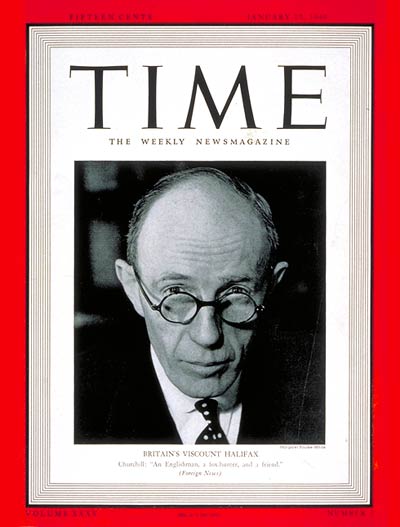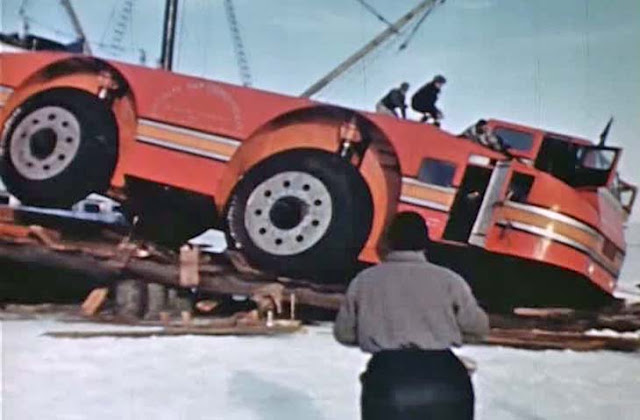Monday 15 January 1940
 |
| U-44, a Type IXA boat, showing pennants. Member of the 2d Flotilla operating out of Wilhelmshaven. |
Winter War Army Operations: Soviet heavy artillery opens up in sustained fashion on the Summa section of the Mannerheim. Such bombardments are typically a prelude to a set-piece attack, but such an attack is nowhere in sight yet. The bombardment provides the Finns no rest and damages their fixed fortifications (which are minimal anyway, such as barbed wire).
Elsewhere, the Soviet armies are largely on their own. Stalin has no big tasks for them, and instead is focusing on new, better-planned operations with fresh troops. Without attention and replenishment, the Soviet forces along the line are gradually weakening and making it easier for the Finns to carve them up into mottis (logs).
Winter War Air Operations: Soviet bombers attack Viipuri and other Finnish cities.
Mechelen Incident: The British respond to the Belgian request for guarantees first thing in the morning in a manner that is considered weak. The Belgians stop removing border obstacles on the French border. At noon, Premier Daladier tells Pol le Tellier, Belgium's ambassador to France, that Belgium must invite French troops into Belgium by 20:00 or he would pull all French and British troops from the border. The Belgians not only do not respond, but they begin replacing the barriers on the French border.
General Raoul van Overstraeten, King Leopold's military adviser, instructs the Belgian border troops to "repulse by force any foreign unit of whatever nationality which violated Belgian territory," which is not what the French were looking for. The Belgians also have given a negative reply to the same request previously by the British. Once again, the threat of a German invasion has not drawn the Allies together, but rather thrown them further apart. By forbidding the entry of French troops, the Belgians maintain their neutrality but also force the other Allies to rely on them for the defense of the section of the Front not covered by the Maginot.
On the German side, General Jodl of OKW advises Hitler that the weather is too poor for an invasion and it should be called off indefinitely, not just postponed for a few days now and again. Hitler, still set on an early invasion, decides to think it over and gives no firm decision.
Battle of the Atlantic: Around midnight, U-44 (Kapitänleutnant Ludwig Mathes) torpedoes and sinks the 1,590-ton Norwegian freighter Fagerheim southwest of Quessant in the English Channel. Five survive, 15 perish.
Inter-American Relations: An Inter-American Neutrality Committee is formed, due to the Battle of the River Platte, to strengthen neutrality in the Western Hemisphere. It holds its first meeting in Brazil.
German/Danish Relations: The Germans request that the Danes blackout their island of Roenoe, which the British are using as a guide to the German base on Sylt. The Danes comply.
US Military: The army and navy conduct joint amphibious landing exercises in California.
China: The Winter Offensive has run its course for the 9th War Area, which winds down its attacks. The offensive has regained vital territory and brought down the Japanese government.
 |
| Lord Halifax on the cover of the 15 January 1940 cover of Time Magazine. There is some thought that he may be the next British Prime Minister. |
Admiral Byrd drove the beast - in reverse - for a few weeks. He covered up to 92 miles (148 km) in one journey. However, eventually, even in reverse the snow cruiser eventually gets stuck. Rather than attempt further heroic measures, Byrd just left it in situ and used it as a heated camp for his Little America 1- a function which it performed admirably, though burning a lot of precious gasoline. Byrd left it behind when the expedition concluded - and there it sits to this day, assuming the ice below it never melted.
January 1940
January 1, 1940: Finns Carve up the SovietsJanuary 2, 1940: Finnish Counterattacks Continue
January 3, 1940: Soviets Trapped
January 4, 1940: Soviet Breakout Attempts Fail
January 5, 1940: Dicing Up the Soviets
January 6, 1940: Soviet 44th Division Runs
January 7, 1940: Shakeup in Soviet High Command
January 8, 1940: Ratte Road Battle Ends
January 9, 1940: British Submarines in Peril
January 10, 1940: Mechelen Incident
January 11, 1940: Finns Surround More Soviets
January 12, 1940: New Soviet Attacks at Taipale
January 13, 1940: Fall Gelb Postponed
January 14, 1940: Japan's Government Falls
January 15, 1940: Soviets Prepare More Carefully
January 16, 1940: German Atrocities Uncovered
January 17, 1940: Bletchley Park in Action
January 18, 1940: New Hope for Allied Shipping
January 19, 1940: Finnish Attacks at Salla
January 20, 1940: Churchill Urges Cooperation
January 21, 1940: Asam Maru Incident
January 22, 1940: Dissension Within British Government
January 23, 1940: Dissension in South Africa
January 24, 1940: NKVD Blocking Detachments
January 25, 1940: Auschwitz Site Selected
January 26, 1940: Millionaire Bunker Destroyed
January 27, 1940: U-20 Sinks Four Ships
January 28, 1940: Softening Up the Finns
January 29, 1940: Moscow Willing to Talk
January 30, 1940: Hitler Throws Down the Gauntlet
January 31, 1940: Timoshenko Is Ready
2019

No comments:
Post a Comment